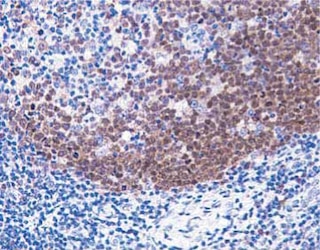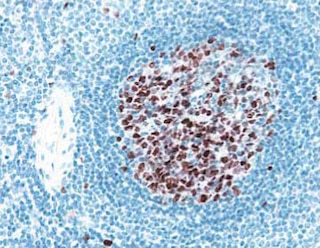-
Reagents
- Flow Cytometry Reagents
-
Western Blotting and Molecular Reagents
- Immunoassay Reagents
-
Single-Cell Multiomics Reagents
- BD® OMICS-Guard Sample Preservation Buffer
- BD® AbSeq Assay
- BD® Single-Cell Multiplexing Kit
- BD Rhapsody™ ATAC-Seq Assays
- BD Rhapsody™ Whole Transcriptome Analysis (WTA) Amplification Kit
- BD Rhapsody™ TCR/BCR Next Multiomic Assays
- BD Rhapsody™ Targeted mRNA Kits
- BD Rhapsody™ Accessory Kits
- BD® OMICS-One Protein Panels
-
Functional Assays
-
Microscopy and Imaging Reagents
-
Cell Preparation and Separation Reagents
-
- BD® OMICS-Guard Sample Preservation Buffer
- BD® AbSeq Assay
- BD® Single-Cell Multiplexing Kit
- BD Rhapsody™ ATAC-Seq Assays
- BD Rhapsody™ Whole Transcriptome Analysis (WTA) Amplification Kit
- BD Rhapsody™ TCR/BCR Next Multiomic Assays
- BD Rhapsody™ Targeted mRNA Kits
- BD Rhapsody™ Accessory Kits
- BD® OMICS-One Protein Panels
- Belgium (English)
-
Change country/language
Old Browser
This page has been recently translated and is available in French now.
Looks like you're visiting us from United States.
Would you like to stay on the current country site or be switched to your country?
BD Pharmingen™ 10X Zinc Fixative (Formalin Free)

10X Zinc Fixative: Mouse spleen fixed in zinc fixative (left panel) or neutral buffered formalin (right panel) was embedded in paraffin and sectioned. The sections were stained with anti-mouse CD45.1 antibody (Cat. No. 553774). Positive staining of cells can be identified by the intense brown labeling. Amplification 20X.

10X Zinc Fixative: Mouse spleen fixed in zinc fixative (left panel) or neutral buffered formalin (right panel) was embedded in paraffin and sectioned. The sections were stained with anti-mouse CD45.1 antibody (Cat. No. 553774). Positive staining of cells can be identified by the intense brown labeling. Amplification 20X.

10X Zinc Fixative: Mouse spleen fixed in zinc fixative (left panel) or neutral buffered formalin (right panel) was embedded in paraffin and sectioned. The sections were stained with anti-mouse CD45.1 antibody (Cat. No. 553774). Positive staining of cells can be identified by the intense brown labeling. Amplification 20X.

BD Pharmingen™ 10X Zinc Fixative (Formalin Free)
Regulatory Status Legend
Any use of products other than the permitted use without the express written authorization of Becton, Dickinson and Company is strictly prohibited.
Product Details
Description
10X Zinc Fixative is a Tris-based buffer with zinc ions for fixation of tissue for immunohistochemical staining. Zinc fixation is an alternative to formalin fixation of tissue for paraffin embedded sections. 10% neutral buffered formalin fixes the tissue by cross-linking proteins, but may cause a conformational change or "masking" of the antigenic epitope leading to reduced or absent antibody reactivity. Different antigen retrieval techniques can be used to unmask the epitope, such as with BD Retrievagen A and B solutions. It is not possible, however, in some situations to retrieve the epitope and obtain optimal immunohistochemical staining. In these situations, the fixation of tissue with IHC Zinc Fixative is recommended, as it is a milder fixative compared to formalin. Zinc-fixed, paraffin embedded sections can provide for excellent immunostaining results for many different leukocyte markers with tissue morphology comparable to formalin-fixation. Use of antigen retrieval techniques on zinc-fixed paraffin sections may even further enhance antibody reactivity in some cases. Investigators should note that some antigens may not be preserved by zinc-fixation and in these situations, the use of fresh frozen tissue for immunohistochemical staining is recommended.
Preparation And Storage
Recommended Assay Procedures
10X Zinc Fixative must be diluted 1:10 in sterile water prior to use. For optimal immunohistochemical preservation of antigens, Zinc Fixative is recommended prior to processing and embedding into paraffin blocks. Fix tissues by placing freshly dissected tissue pieces (no larger than 3 mm in thickness) in Zinc Fixative and allowing to sit 24-48 hr at room temperature. Tissue can then be processed according to a normal processing schedule with the exception of 1X Zinc Fixative in station # 1 in place of 10% neutral buffered formalin. Tissue can then be embedded into a paraffin block for storage until microtome sectioning.
Danger: 10X Zinc Fixative (formalin free) contains 4.42% zinc chloride (w/w).
Hazard Statements
Causes skin irritation.
Causes serious eye damage.
Toxic to aquatic life with long lasting effects.
Precautionary Statements
Wear protective clothing / eye protection.
Wear protective gloves.
IF IN EYES: Rinse cautiously with water for several minutes. Remove contact lenses, if present and easy to do. Continue rinsing.
IF ON SKIN: Wash with plenty of water.
Dispose of contents/container in accordance with local/regional/national/international regulations.
Product Notices
- Please refer to www.bdbiosciences.com/us/s/resources for technical protocols.
Data Sheets
Companion Products


Development References (1)
-
Beckstead JH. A simple technique for preservation of fixation-sensitive antigens in paraffin-embedded tissues. J Histochem Cytochem. 1994; 42(8):1127-1134. (Methodology). View Reference
Please refer to Support Documents for Quality Certificates
Global - Refer to manufacturer's instructions for use and related User Manuals and Technical data sheets before using this products as described
Comparisons, where applicable, are made against older BD Technology, manual methods or are general performance claims. Comparisons are not made against non-BD technologies, unless otherwise noted.
For Research Use Only. Not for use in diagnostic or therapeutic procedures.